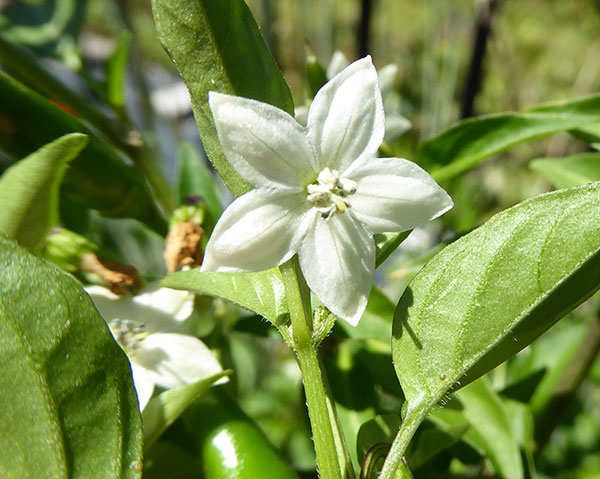Botanical name
Solanaceae
Features of the nightshade family
This plant family is very diverse, it ranges from annuals to perennials, herbs, vines, shrubs and even trees. It is present globally. Plants in the nightshade family show a typical star shaped flower with five petals that are grown together to a funnel. Most of these plants have berries as fruits, some additionally develop underground tubers.
Many of the nightshades carry very potent alkaloids as a defense-mechanism to avoid to be eaten, nicotine perhaps being the most commonly known one. You might have heard of capsaicin the stuff that makes chilies hot. Others are atropine, hyoscyamine, scopolamine and many more . Some of these toxins can be deadly poisons to humans, especially to kids. But you might also have encountered those words reading the fine-print on some very beneficial medicines you get at the pharmacy.
Not all parts of the nightshade plants carry these toxins. It is very important to understand which parts of these plants are safe to eat, and which parts are seriously dangerous.
Species we grow
Tomatoes, eggplants, chillis, capsicums.
Other common plants in this family
Familiar species grown for food are potatoes, cape gooseberry, goji-berry and tomatillo. Another species used for human consumption is tobacco.
Some decorative plants like petunias, angel’s trumpets and moonflowers are also nightshades, as are deadly nightshade and henbane which supply us with potent medical drugs.
